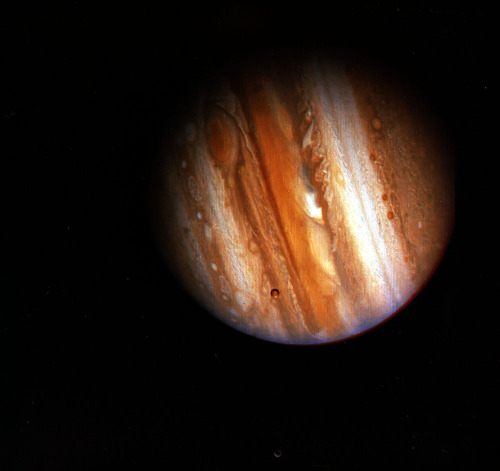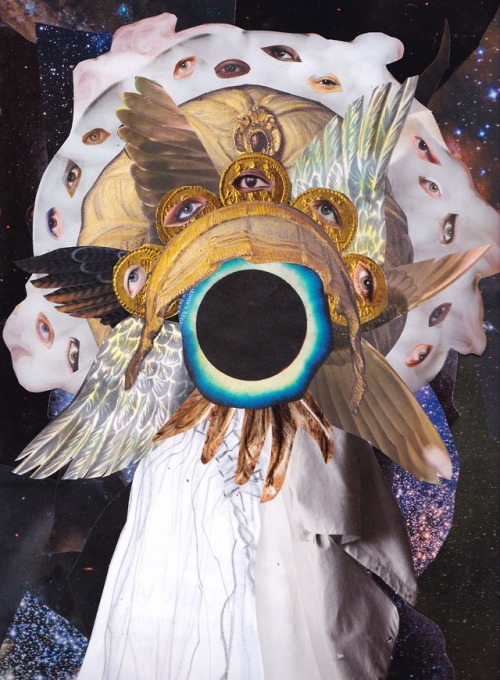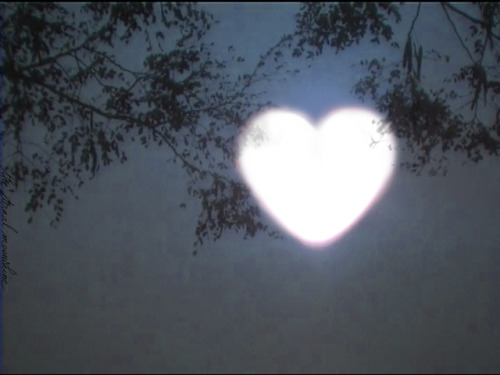Sidusglacies - ⚡️

More Posts from Sidusglacies and Others

On February 5, 1979, Voyager 1 made its closest approach to Jupiter since early 1974 and 1975 when Pioneers 10 and 11 made their voyages to Jupiter and beyond.
Credit: NASA
Huge news! Astronomers using the Hubble space telescope have discovered water in the atmosphere of an exoplanet in its star’s habitable zone. If confirmed, it will be the first time we’ve detected water—a critical ingredient for life as we know it—on an exoplanet. The water was detected as vapour in the atmosphere, but the temperature of the planet means it could sustain liquid water on its surface, if it’s rocky.
The planet is called K2-18b, and it’s about 110 light years away. The planet is much different than Earth. It’s a Super-Earth, and it’s twice as large as Earth, and about 8 times as massive. K2-18b is orbiting a red dwarf star, and it was first discovered in 2015 by the Kepler Space Telescope.
Dr. Angelos Tsiaras (UCL Centre for Space Exochemistry Data, CSED), said: “Finding water on a potentially habitable world other than Earth is incredibly exciting. K2-18b is not ‘Earth 2.0’ as it is significantly heavier and has a different atmospheric composition. However, it brings us closer to answering the fundamental question: Is the Earth unique?”
The team behind the discovery developed algorithms and ran archived Hubble data from 2016 and 2017 through them. They analyzed starlight from the red dwarf star as it passed through the exoplanet’s atmosphere. They discovered the molecular signature of water, as well as hydrogen and helium.
This discovery needs follow-up observations to confirm it. We also need better telescopes to study its atmosphere in greater detail, and the atmospheres of other exoplanets. Two telescopes on the horizon will tackle that job. The James Webb Space Telescope will have the powerful capability to examine the atmospheres of exoplanets, which is really the next step in understanding all of the exoplanets found by Kepler, and which will be found by TESS.
The ESA’s ARIEL (Atmospheric Remote-sensing Infrared Exoplanet Large-survey) mission will launch in 2028 and will study the atmospheres of about 1000 exoplanets in detail. ARIEL, along with the JWST, will give us a much better understanding of K2-12b and exoplanets like it.










↳ in the profound darkness of certain nights i have seen the sky streaked with so many trailing sparks that it seemed to me a great gale must be blowing through the outer heavens (antoine de saint-exupery)
(insp.)

And the angel said, “DO NOT BE AFRAID.”

Heart-shaped Moon

Light pillars are a rare optical phenomenon in which ice crystals in the atmosphere reflect sources of light in a vertical formation. Long, illuminated beams can form above or below sources of artificial or natural light due to the air being extremely cold.


-
 viatori reblogged this · 6 months ago
viatori reblogged this · 6 months ago -
 wintrii-shadows liked this · 9 months ago
wintrii-shadows liked this · 9 months ago -
 blazey-blase-blah reblogged this · 1 year ago
blazey-blase-blah reblogged this · 1 year ago -
 corihasastory liked this · 1 year ago
corihasastory liked this · 1 year ago -
 fat-reik liked this · 1 year ago
fat-reik liked this · 1 year ago -
 battyyy reblogged this · 1 year ago
battyyy reblogged this · 1 year ago -
 planetchsky reblogged this · 1 year ago
planetchsky reblogged this · 1 year ago -
 theblackgooseberry reblogged this · 1 year ago
theblackgooseberry reblogged this · 1 year ago -
 a-silent-touch liked this · 1 year ago
a-silent-touch liked this · 1 year ago -
 keatsonthebeach liked this · 1 year ago
keatsonthebeach liked this · 1 year ago -
 riddlemethispoetry reblogged this · 1 year ago
riddlemethispoetry reblogged this · 1 year ago -
 riddlemethispoetry liked this · 1 year ago
riddlemethispoetry liked this · 1 year ago -
 cannamermaid reblogged this · 1 year ago
cannamermaid reblogged this · 1 year ago -
 jaibajaja reblogged this · 1 year ago
jaibajaja reblogged this · 1 year ago -
 leestoner liked this · 1 year ago
leestoner liked this · 1 year ago -
 maudlin-queer reblogged this · 1 year ago
maudlin-queer reblogged this · 1 year ago -
 angstpenis reblogged this · 1 year ago
angstpenis reblogged this · 1 year ago -
 crates-n-808s liked this · 1 year ago
crates-n-808s liked this · 1 year ago -
 minnie-mystery reblogged this · 1 year ago
minnie-mystery reblogged this · 1 year ago -
 minnie-mystery liked this · 1 year ago
minnie-mystery liked this · 1 year ago -
 thegirlwiththemissingheart liked this · 1 year ago
thegirlwiththemissingheart liked this · 1 year ago -
 perfectly--misaligned reblogged this · 1 year ago
perfectly--misaligned reblogged this · 1 year ago -
 hop-water-music reblogged this · 1 year ago
hop-water-music reblogged this · 1 year ago -
 hop-water-music liked this · 1 year ago
hop-water-music liked this · 1 year ago -
 nighth0wl reblogged this · 1 year ago
nighth0wl reblogged this · 1 year ago -
 gnlives liked this · 1 year ago
gnlives liked this · 1 year ago -
 insomniaddict1 reblogged this · 1 year ago
insomniaddict1 reblogged this · 1 year ago -
 freestsoulintheverse reblogged this · 1 year ago
freestsoulintheverse reblogged this · 1 year ago -
 freestsoulintheverse liked this · 1 year ago
freestsoulintheverse liked this · 1 year ago -
 alienshifter reblogged this · 1 year ago
alienshifter reblogged this · 1 year ago -
 iseetheworldinmetaphor liked this · 1 year ago
iseetheworldinmetaphor liked this · 1 year ago -
 let-the-dominoes-fall reblogged this · 1 year ago
let-the-dominoes-fall reblogged this · 1 year ago -
 princesspouty reblogged this · 1 year ago
princesspouty reblogged this · 1 year ago -
 novazan reblogged this · 1 year ago
novazan reblogged this · 1 year ago -
 novazan liked this · 1 year ago
novazan liked this · 1 year ago -
 thewanderingroot liked this · 1 year ago
thewanderingroot liked this · 1 year ago -
 moonygyal liked this · 1 year ago
moonygyal liked this · 1 year ago -
 moonygyal reblogged this · 1 year ago
moonygyal reblogged this · 1 year ago -
 queerandlonelyx reblogged this · 1 year ago
queerandlonelyx reblogged this · 1 year ago -
 handowls reblogged this · 1 year ago
handowls reblogged this · 1 year ago -
 unicorn-cupcake-lace reblogged this · 1 year ago
unicorn-cupcake-lace reblogged this · 1 year ago -
 wiionetwo34 reblogged this · 1 year ago
wiionetwo34 reblogged this · 1 year ago -
 wiionetwo34 liked this · 1 year ago
wiionetwo34 liked this · 1 year ago -
 jungrl liked this · 1 year ago
jungrl liked this · 1 year ago -
 psychedelic-sagittarius reblogged this · 1 year ago
psychedelic-sagittarius reblogged this · 1 year ago -
 psychedelic-sagittarius liked this · 1 year ago
psychedelic-sagittarius liked this · 1 year ago


